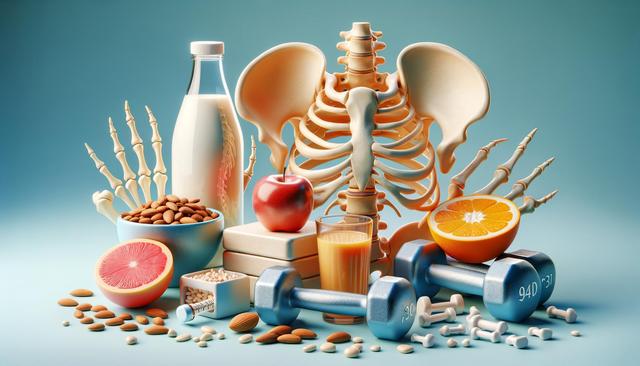Why Bone Health Matters at Every Age
Bone health is crucial for overall wellness, yet it’s often overlooked until problems arise. Our bones form the framework of our bodies, support movement, and protect vital organs. From adolescence through adulthood and into older age, caring for our bones can help prevent conditions like osteoporosis and fractures. Peak bone mass is typically reached by the late 20s, making early and consistent attention to bone health important.
As we age, bone density gradually declines, especially in women after menopause. However, this natural process can be slowed with proper nutrition, lifestyle habits, and targeted exercise routines. Exercise doesn’t just benefit muscles and the heart—it directly stimulates bone growth and helps maintain bone strength, making it a key component of long-term health planning.
Incorporating bone-strengthening habits early, and maintaining them consistently, can significantly reduce the risk of injury and bone-related disorders later in life. Whether you’re in your 20s or 70s, it’s never too early or too late to focus on bone health.
The Science Behind Exercise and Bone Strength
Bones are living tissues that respond to stress, which is why exercise is such an effective way to strengthen them. When you engage in weight-bearing or resistance activities, it stimulates bone-forming cells, leading to increased bone density and strength over time. This is particularly important for individuals at risk of osteoporosis or those recovering from bone injuries.
Two types of exercises are especially beneficial for bone health:
- Weight-bearing exercises: Activities like walking, jogging, dancing, and stair climbing make your body work against gravity, which promotes bone formation.
- Resistance training: Using weights, resistance bands, or bodyweight exercises (like squats and push-ups) helps build muscle and bone strength simultaneously.
Scientific studies consistently show that people who engage in regular physical activity have higher bone density and lower rates of bone loss. Exercise also improves balance and coordination, reducing the risk of falls that can lead to fractures in older adults.
Top Exercises to Include in Your Routine
To optimize bone health, a balanced exercise routine should include a mix of cardiovascular, strength, flexibility, and balance training. Here are several exercises known to support bone health effectively:
- Walking or hiking: Gentle on the joints but effective for maintaining bone density, especially in the hips and spine.
- Jumping rope or light plyometrics: High-impact activities that stimulate bone growth, recommended for those with healthy joints.
- Strength training: Exercises like lunges, squats, and lifting weights build muscle and stress bones in a constructive way.
- Yoga and Pilates: Improve posture, flexibility, and balance, which help prevent falls and support skeletal alignment.
- Tai Chi: A low-impact exercise that enhances coordination and balance while providing mild resistance for bones.
It’s important to start gradually, especially if you’re new to exercise or managing an existing bone condition. Consulting a healthcare professional or certified trainer can help ensure you choose safe and effective movements for your needs.
Exercise Frequency and Safety Considerations
Consistency is key when it comes to reaping the bone-strengthening benefits of exercise. According to health guidelines, adults should aim for at least 150 minutes of moderate-intensity aerobic activity each week, along with two or more days of muscle-strengthening exercises.
To avoid injury and get the most from your workouts, keep these safety tips in mind:
- Warm up and cool down: Spend 5–10 minutes preparing your body for activity and gradually easing it back to rest afterward.
- Use proper form: Performing exercises with correct technique reduces strain on joints and bones.
- Progress gradually: Increase intensity and duration over time to allow your bones and muscles to adapt safely.
- Listen to your body: Discomfort is normal during exercise, but sharp or persistent pain should be evaluated by a professional.
If you have low bone density or a history of fractures, avoid high-impact exercises without medical clearance. Activities with a high risk of falls or sudden movements may need to be modified to suit individual needs.
Complementing Exercise with Lifestyle Choices
While exercise is a cornerstone of bone health, it works best when combined with a balanced lifestyle. Nutrition, sleep, and other daily habits play a pivotal role in supporting strong bones. Key factors that complement an active routine include:
- Calcium intake: Vital for bone formation and repair. Dairy products, leafy greens, and fortified foods are excellent sources.
- Vitamin D: Helps the body absorb calcium. Sunlight exposure and foods like fatty fish or supplements can help maintain adequate levels.
- Avoiding smoking and excessive alcohol: Both can weaken bones and interfere with the body’s ability to absorb nutrients.
- Staying hydrated: Good hydration supports joint function and overall physical performance.
Additionally, regular check-ups and bone density screenings may be recommended for older adults or those with risk factors. These assessments help monitor bone health and guide personalized exercise plans.
Ultimately, adopting a holistic approach that includes physical activity, proper nutrition, and smart lifestyle choices creates a solid foundation for lifelong bone strength.
Conclusion: Taking Action for Stronger Bones
Building and maintaining strong bones is an ongoing process that benefits greatly from regular physical activity. Whether you’re just starting your fitness journey or looking to enhance your current routine, incorporating bone-strengthening exercises can make a meaningful difference. By choosing appropriate activities, practicing consistently, and supporting your efforts with healthy habits, you can protect your bones and improve your quality of life at any age.


